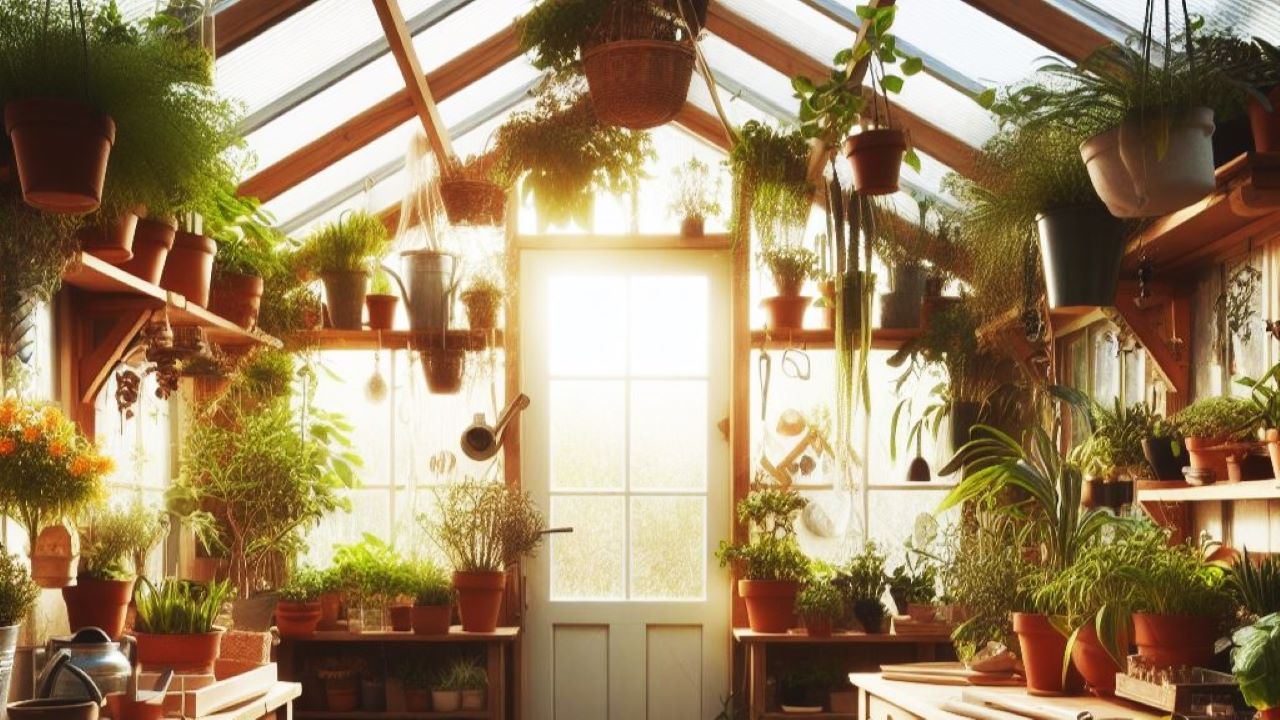Greenhouses offer garden enthusiasts a controlled environment for nurturing plants, extending growing seasons, and cultivating a wide variety of crops. While prefabricated greenhouses are readily available, embarking on a do-it-yourself (DIY) project can be both fulfilling and cost-effective. In this comprehensive guide, we’ll delve into 10 creative DIY greenhouse ideas, exploring their designs, materials, construction methods, and potential benefits.
1. Cold Frame Greenhouse:
Cold frame greenhouses are an excellent starting point for beginners and those with limited space or resources. Essentially a low, transparent structure built over a planting area, they provide protection from frost, wind, and pests. Construction is relatively simple, often involving recycled materials such as old windows, glass panels, or polycarbonate sheets. These materials are positioned to form a sloped roof, allowing sunlight to penetrate while trapping heat to create a warm microclimate for plants.
2. PVC Pipe Greenhouse:
PVC pipe greenhouses are popular for their affordability, flexibility, and ease of construction. By bending PVC pipes into arches and securing them to a frame, you can create a hoop-style structure. The hoops are then covered with greenhouse plastic or UV-resistant polyethylene film. This design offers ample headroom for taller plants and facilitates efficient water runoff. PVC pipe greenhouses are lightweight, making them portable and suitable for temporary installations.
3. Wood Frame Greenhouse:
For a more durable and aesthetically pleasing option, consider building a wood frame greenhouse. Wood provides structural strength and natural insulation, creating a stable environment for plants. Cedar or redwood are ideal choices due to their resistance to decay and insects. The greenhouse can be constructed using basic carpentry skills, with framing members assembled into a sturdy framework. Transparent panels, such as polycarbonate sheets or glass, are then installed to enclose the structure and allow sunlight to enter.
4. Upcycled Materials Greenhouse:
Embrace sustainability by repurposing old materials to construct your greenhouse. Salvaged items like glass doors, windows, or plastic bottles can be creatively incorporated into the design. Not only does this approach minimize waste, but it also adds character and uniqueness to your greenhouse. Upcycled materials can be combined with traditional building components to create a one-of-a-kind structure that reflects your personal style and values.
5. Lean-to Greenhouse:
Maximize space utilization by building a lean-to greenhouse attached to an existing wall or structure. This design is ideal for smaller yards or urban environments where space is limited. By utilizing the shared wall for support and thermal mass, you can create a more energy-efficient greenhouse. Orientation plays a crucial role in maximizing sunlight exposure, with south-facing walls providing optimal solar gain. Lean-to greenhouses can be constructed using a variety of materials, including wood, metal, or PVC.
6. Geodesic Dome Greenhouse:
Geodesic domes offer unparalleled strength and efficiency in greenhouse design. Inspired by natural geometric forms, these spherical structures distribute structural loads evenly, making them resistant to harsh weather conditions. While more complex to construct, geodesic domes provide ample interior space and allow for optimal light penetration. The frame can be made from materials such as PVC pipes, metal tubing, or wood, arranged in a series of interconnected triangles. Transparent coverings, such as greenhouse plastic or polycarbonate panels, are then stretched over the frame to enclose the dome.
7. Aquaponic Greenhouse:
Combine aquaculture and hydroponics in a symbiotic ecosystem known as aquaponics. In an aquaponic greenhouse, fish waste fertilizes hydroponically grown plants, while the plants filter and purify the water for the fish. This closed-loop system maximizes resource efficiency and minimizes waste, making it an environmentally friendly option for sustainable gardening. Aquaponic systems can be integrated into various greenhouse designs, ranging from small-scale setups for home use to larger commercial operations.
8. Solar Greenhouse:
Harness the power of the sun to create a passive solar greenhouse that regulates temperature and reduces energy consumption. Key design elements include thermal mass, insulation, and proper orientation to maximize solar gain during the colder months. A solar greenhouse absorbs and stores heat during the day, releasing it slowly at night to maintain optimal growing conditions. Strategic placement of vents and shading devices helps prevent overheating in the summer while promoting airflow and ventilation. By leveraging renewable energy sources, solar greenhouses offer a cost-effective and sustainable solution for year-round gardening.
9. Portable Greenhouse:
Ideal for renters or gardeners with limited space, portable greenhouses provide flexibility and convenience. These lightweight structures are easy to assemble, disassemble, and move as needed. Common designs include collapsible frames made from metal or PVC tubing, covered with durable greenhouse fabric or plastic. Portable greenhouses come in various shapes and sizes, from small pop-up tents to larger walk-in models. They offer protection from the elements while allowing for easy access to plants and ventilation.
10. Hybrid Greenhouse:
Combine elements from different greenhouse designs to create a hybrid structure that meets your specific needs and preferences. For example, you could integrate a cold frame with a wood frame greenhouse, incorporating upcycled materials and aquaponic systems. Hybrid greenhouses offer versatility and customization options, allowing you to experiment with various growing techniques and technologies. By blending traditional and innovative approaches, you can create a truly unique and functional greenhouse tailored to your gardening goals.
Embarking on a DIY greenhouse project opens up a world of creative possibilities for garden enthusiasts. Whether you’re a beginner or seasoned gardener, there’s a design to suit every skill level, budget, and space requirement. By exploring different materials, construction methods, and technologies, you can build a greenhouse that not only nurtures plants but also enhances your connection with nature. So roll up your sleeves, gather your tools, and start building your dream greenhouse today!



